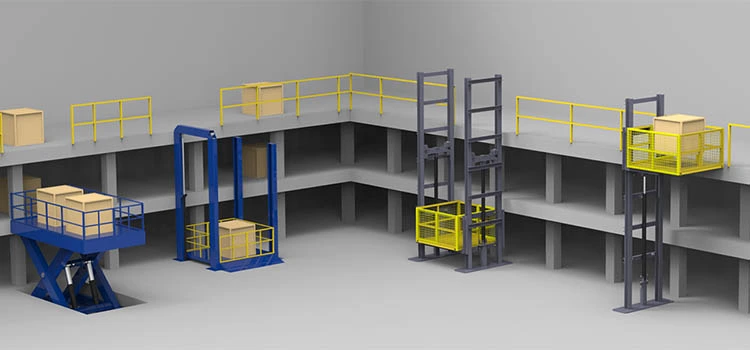We Maintain Lifts to the Greatest Standards: Reliable Service for All Lift Kind
We Maintain Lifts to the Greatest Standards: Reliable Service for All Lift Kind
Blog Article
Exploring the Globe of Lifts: Typical Concerns Dealt With by Different Lift Devices
As we browse through the vertical transportation systems of contemporary structures, elevators attract attention as a vital element of our day-to-day lives. Nonetheless, behind their seamless operation exists a globe of elaborate mechanisms that can occasionally come across obstacles. From hydraulic elevators to grip systems and machine-room-less designs, each lift type features its collection of usual concerns. Understanding these challenges is vital for making certain the smooth performance of these vital systems. Let's explore the complexities that underlie the procedure of elevators and the potential issues that can occur, dropping light on the complex internet of lift mechanisms.
Hydraulic Lifts
Hydraulic elevators, usually preferred for low-rise structures, utilize fluid pressure to control the activity of the elevator auto (lift repair companies). This device entails a hydraulic pump pushing oil into a cylinder, causing the elevator to move in the wanted direction. While hydraulic lifts are understood for their quiet and smooth procedure, they do feature their very own set of typical concerns
One widespread trouble with hydraulic elevators is oil leakage. Furthermore, issues with the control system, such as damaged shutoffs or a malfunctioning pump, can trigger interruptions in the elevator's motion.
Regular upkeep and punctual repair services are important to make sure the smooth functioning of hydraulic lifts. By resolving these typical issues proactively, structure owners can reduce downtime and make sure the safety and security and efficiency of their upright transport system.
Traction Elevators
When thinking about vertical transportation systems in buildings, an additional typical type in addition to hydraulic lifts is the traction elevator. Grip lifts run making use of a system of ropes and counterweights that relocate the lift car by grasping onto the hoist ropes. This mechanism enables for smoother and quicker upright transport contrasted to hydraulic systems.
Among the common issues encountered by grip lifts is rope wear. The continuous activity of the ropes within the traction system can cause put on and tear in time, possibly creating the elevator to breakdown or become harmful for use. Normal examinations and maintenance of the ropes are vital to ensure the elevator's proper performance and safety and security.
One more issue that traction lifts might encounter is associated with the control system. Troubles with the control system can lead to concerns such as unpredictable motion, hold-ups in response times, or perhaps full shutdowns. Regular screening and upkeep of the control system are critical to stop such problems and guarantee the elevator's dependability.
Machine-Room-Less (MRL) Elevators

Among the essential parts of MRL lifts is the portable gearless grip machine that is set up within the hoistway. This device successfully drives the lift automobile without the need for large tools found in standard grip lifts. Furthermore, MRL lifts generally make use of a weight system to stabilize the automobile, additional improving their energy performance.
Regardless of their advantages, MRL elevators might deal with difficulties related to repair and maintenance as a result of the confined space for tools setup. Accessibility for servicing parts within the shaft can be limited, calling for specialized training for service technicians. Proper maintenance timetables and normal examinations are important to guarantee the ongoing smooth operation of MRL elevators.
Overloading and Weight Limitation Issues
Overloading and weight limitation issues are important issues in elevator operations. Lift producers design raises with certain weight abilities to ensure traveler safety and tools long life.
When elevators are strained, it puts extreme strain on the electric motor, cable televisions, and various other parts, possibly creating malfunctions or failures. Safety and security systems such as sensors and overload sensing units remain in area to stop elevators from relocating if they spot excess weight. Additionally, disabled platform lifts prices uk exceeding weight limits can result in raised energy usage and damage on the elevator system.
To minimize straining issues, building supervisors must prominently display weight restrictions in elevators and educate passengers on the importance of sticking to these limitations - lift repair companies. Regular maintenance checks by qualified specialists can additionally aid ensure that lifts are operating within secure weight specifications. By addressing overloading and weight limit issues proactively, building proprietors can enhance lift safety and security and performance
Electrical System Failures
Exceeding weight limits in elevators can not only lead to mechanical problems yet also potentially contribute to electrical system failings within the lift facilities. Electrical system failings are a critical concern in elevator operation, as they can trigger unanticipated shutdowns, breakdowns, or also safety and security risks.
Additionally, power surges or fluctuations in the electrical supply can we maintain lifts also interrupt the elevator's operation, impacting its performance and safety. These electrical disruptions can damage sensitive lift components such as control board, circuit boards, or sensors, causing system failures. Normal maintenance and evaluations are important to identify and deal with potential electrical concerns without delay, making sure the risk-free and reliable operation of elevator systems. By adhering to weight limits and carrying out routine electrical system checks, building owners can minimize the threat of electrical failings in elevators.
Verdict

Hydraulic lifts, usually liked for low-rise buildings, make use of fluid pressure to manage the motion of the elevator vehicle.When taking into consideration upright transportation systems in structures, one more usual type apart from hydraulic lifts is the grip elevator. Traction elevators operate using a system of ropes and we maintain lifts counterweights that move the lift cars and truck by grasping onto the hoist ropes. Unlike standard lifts that need a different device area to house the tools, MRL lifts integrate many of the parts within the shaft, getting rid of the demand for a specialized device space.In conclusion, lifts face common problems such as hydraulic malfunctions, grip system failures, and electric system issues.
Report this page